► Jaguar’s EV gets charging and connectivity updates for 2021
► Priced from £65,195, available to order now
► Everything you need to know
The Jaguar I-Pace has been upgraded for 2021. Leading the way are an uprated on-board AC charger and the fitment of JLR’s latest infotainment set-up first seen in the Land Rover Defender. Jaguar says that the charging and software updates are a result of the advancements made through the company’s involvement in Formula E.
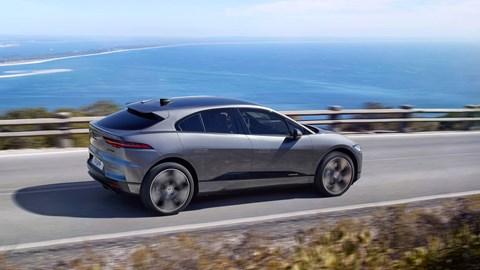
What’s changed outside and in?
There’s not a great deal wrong with the way the I-Pace looks, so Jaguar has rightly not tinkered too much. Entry-level models get 19 instead of 18-inch wheels, and you can now specify a new Atlas Grey finish for its grille. In addition, there’s an optional new Bright Pack, which adds a small splash of chrome to the front end, mirrors and window surrounds. As we say, it’s the lightest of updates.
Best electric cars
Inside, there are bigger changes afoot. Out goes JLR’s old infotainment set-up, and in comes the company’s excellent Pivi Pro system, which is currently only available in the Land Rover Defender. This is a big and much-needed upgrade, which should add significantly to the appeal of the I-Pace.
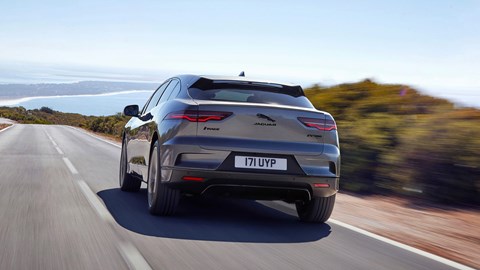
In the I-Pace, Pivi Pro Combines a 12.3-inch digital instrument cluster and twin 10.0- and 5.0-inch touchscreens in the centre console. It gets a revised set of menus, Tesla-style over-the-air updates, a modernised sat-nav set-up, live traffic information and integrated route-planning information that takes into account electric charging point information. The connected system will advise about charger availability via its complimentary 4G e-SIM set-up.
Anything else you need to know?
Jaguar has also fitted the 360-degree 3D surround camera system seen in the Land Rover range as standard, while the ClearSight digital rear-view mirror is offered as an option. ClearSight uses a screen embedded in the rear-view mirror that relays an from a rear-facing camera to replace the traditional reflected image. This is useful if you have rear-seat passengers, or the back screen is obscured.
The I-Pace’s usefulness as an EV has also been improved thanks to upgrades to its charging system. The old 7kW on-board charger has been replaced by a three-phase 11kW unit as standard, which accelerates topping up. For those with an 11kW domestic wallbox, 33 miles of range can be added in an hour, meaning it’ll be full from empty in 8.6 hours.

With the 7kW wallbox most people have, this rises to 12.75 hours with up to 22 miles of charge being added per hour. The I-Pace’s will continue to be offered with a 100kW on-board DC charger, enabling up to 78 miles of charge in 15 minutes. Public charging via 100kW units remain the same, although recent updates to the I-Pace’s software developed through Formula E racing had already improved its range in daily driving, with the 90kWh battery pack being able to deliver up to 292 miles of range in WLTP testing.
So how much will the Jaguar i-Pace cost in the UK?
The new I-Pace is on sale now, priced from £65,195.
What powers the electric Jaguar i-Pace?
A 90kW battery pack feeds two electric motors, one at each end, making the i-Pace all-wheel-drive.
Total power and torque are equivalent to 395bhp and 513lb ft. Make no mistake, the i-Pace is no slouch, and that battery pack is as big as modern Teslas’, giving it proper long range.
The motors have been designed in-house at Jaguar and are relatively light, weighing about 38kg each. They’re mounted as low as possible in the sandwich platform for optimum weight distribution to keep that trademark Jag agility.
How fast is the new Jaguar i-Pace?
Jaguar says it can accelerate from 0-60mph in 4.5sec. And to prove the point, it screened a film at its world debut where it took on a Tesla Model X 75D and 100D in a 0-60-0mph drag-race in Mexico, with surprising results.
You can watch the Jaguar i-Pace vs Tesla Model X race here
With 50:50 weight distribution and the ability to switch torque instantly between the front and rear axles, it promises an involving driving experience, too.
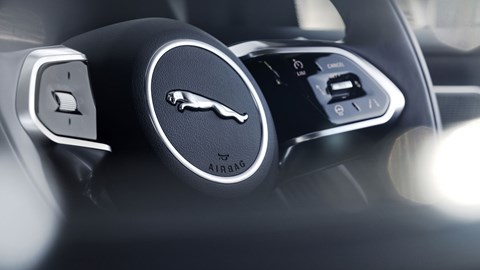
Kerb weight is pegged around 2133kg – those large battery capacities don’t come light (or cheap). The i-Pace is claimed to be more torsionally rigid than an F-type, with a lower centre of gravity than an F-Pace. This bodes well.
Like the latest Nissan Leaf, the i-Pace is set up around ‘one-pedal’ driving, with deceleration strong enough to obviate the use of the brake pedal unless particularly hard braking is required. It’s a style of driving most people will quickly adapt to.
What’s the range? How far will the i-Pace go between charges?
The i-Pace is the first battery electric vehicle (BEV) to be homologated on the new WLTP test cycle, the more stringent replacement for the outmoded NEDC consumption test. Under the new test conditions, the i-Pace is rated at 480km (298 miles).
Read more about the WLTP system in our handy explainer here
Jaguar estimates would be equivalent to approximately 335 miles under the old, less stringent NEDC test. Under the North America-centric EPA test, it would be equivalent to around 240 miles.
How big is the Jaguar i-Pace?
With an overall length of 4680mm, the i-Pace’s dimensions are similar in size to the Porsche Macan, but Jaguar claims interior space equivalent to the larger Cayenne. That’s quite a boast.
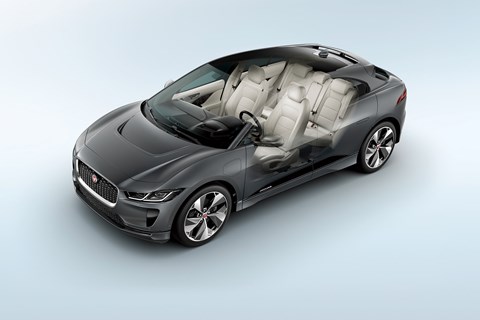
Boot space is an entirely usable 665 litres, and there’s a modest secondary luggage compartment up front where an engine would be in a conventionally fuelled Jag, with space to take a couple of shopping bags or, more likely, keep the charging cable in.
Without a pesky engine to get in the way, the wheelbase has been stretched to nearly three metres and the distinctive ‘cab-forward’ profile pioneered on the i-Pace concept car creates plenty of rear legroom. We’ve sat in it and it’s a remarkably roomy cabin. It’s a five-seater only, no third row of seats here.
The exterior design story
The new Jaguar i-Pace’s styling has stayed very close to the original concept car first shown at the 2016 LA show.
CAR had an early preview of the production-spec i-Pace at Jaguar’s design studio near Coventry with design director Callum.
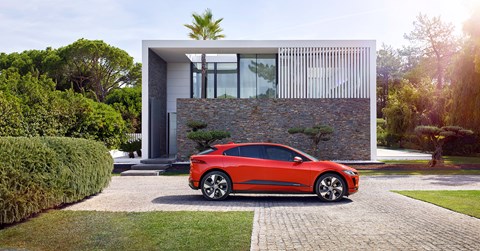
‘I can’t express enough how excited I am about this car,’ he told us. ‘Honestly, it’s probably the most exciting project that I’ve been responsible for in terms of design, and I think the team as well. It came around rather spontaneously really, because we decided that we wanted an electric car, and we decided that it should be a Jaguar for a number of reasons.’
Callum describes the i-Pace as ‘technically an SUV’, which has helped with packaging the extra height required for the batteries and ancillaries, but although the i-Pace isn’t pitched as an off-roader, it’s capable of a wading depth of 500mm. In an electric car! Jaguar says it has built more than 200 prototypes in the course of the i-Pace’s development programme, which has taken in 1.5 million miles of testing to make sure it closes the reliability and durability gap with the class best.
Ian Callum on the Jaguar i-Pace
‘What was great about this for us as a design team is that we started from first principles – there was only what we call a skateboard underneath and nothing really above it, so we could do whatever we wanted [taking into account] the size of people. Apart from some areas of crash and safety requirements, we really had a lot of freedom with this. Creating the car from the ground up to a design we wanted is something very exciting indeed, and for me the shape of the future.’
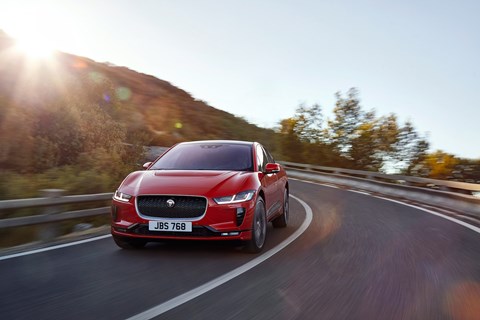
‘The production i-Pace is slightly narrower, it’s slightly taller and the wheels are smaller, but I hope you agree we haven’t deviated too much from the concept,’ adds Callum, proudly.
The show car’s giant 23-inch wheels have downsized, but only slightly – top-spec i-Paces will ride on 22s, and base models start on 19s. Big rims remain a Jag speciality, regardless of cost and ride implications.
The ‘cab-forward’ mid-engined look deliberately echoes 2010’s canned C-X75 supercar, Callum tells CAR magazine. ‘So a little bit of that car saw its way to reality in the end. I wasn’t going to give up on that one!’
Read all our Jaguar reviews here